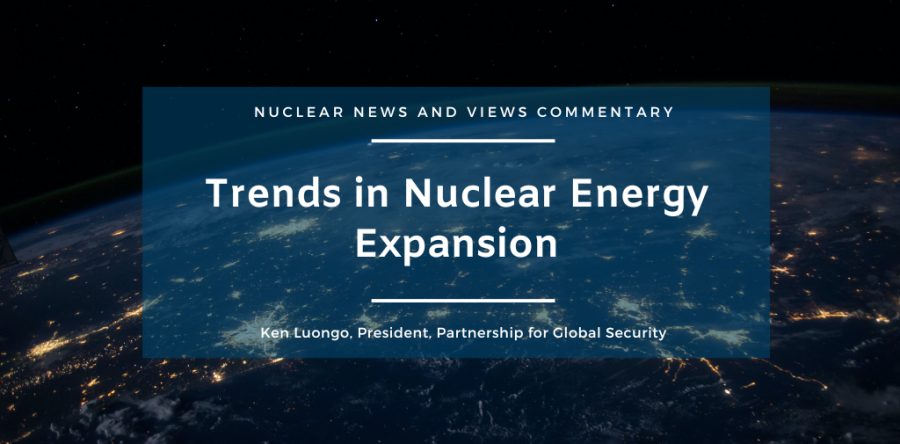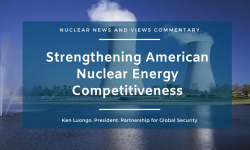The enthusiasm for the expansion of nuclear energy has been significantly elevated since 25 nations at the COP28 climate meeting endorsed tripling the clean energy contribution of this technology by 2050. The question is whether this support can be sustained and turned into actual reactor deployments.
There are recent bright spots. These include the start-up of the fourth unit at the UAE’s Barakah Nuclear Energy Plant and the linking to the electric grid in Georgia of Vogtle’s Unit 4.
Barakah’s four units, APR-1400’s supplied by South Korea, began construction in 2012 and achieved full operation twelve years later at a cost of about $24 billion. There were some delays, but the project was roughly on budget and schedule.
Vogtle’s Units 3 and 4, Westinghouse AP-1000’s, began construction in 2009 and are expected to be fully operational this year. That is seven years beyond the original estimate of 2017, and the cost of $30 billion was over double the original estimate of $14 billion.
These cases offer starkly different examples of efficiency in nuclear deployment. But a review of nuclear market trends indicates that while construction and cost efficiency is highly valued, nuclear energy deployment serves a number of objectives.
A review of the major reactor exporters illustrates some trends.
Russia, China, France, South Korea, and the U.S. are all active in overseas markets. But they are experiencing varying degrees of success.
Russia remains the world’s largest nuclear exporter. However, as a result of its invasion of Ukraine, it has lost potential customers for its VVER reactors in the Czech Republic, Bulgaria, and Finland. Its strategic advantage is that it offers very attractive state-backed financial and operational packages to its reactor customers, now including Egypt, Bangladesh, Turkey, Hungary, India, and China.
China is trying to expand into the international nuclear market using its Hualong One reactor. Its main customer has been Pakistan. Its once-promising collaborations with the U.K. and Romania have been terminated for geopolitical reasons. And its collaboration with Argentina has stalled.
France’s EDF is consumed with ensuring the steady domestic output from its very substantial stable of reactors. But it is collaborating with the U.K. on construction of new power station’s at Hinkley Point C and Sizewell C, despite both continuing to suffer from significant cost overruns and construction delays. It is also competing in other markets including Eastern Europe and the Middle East.
Beyond Barakah, South Korea is competing intensively for new reactor construction in the Czech Republic and other Eastern European nations. Its success in the UAE is a selling point.
In America, Westinghouse has a big deal with Poland for up to six new reactor units and is active elsewhere in Eastern and Central Europe.
What these examples highlight is that international markets seem to be responding to three influences - political system symmetry, geopolitical alliances, and reactor cost.
For example, authoritarian nations like Egypt and Hungary like Putin’s Russian reactors. Anti-Russian governments, like Poland, the Czech Republic, and Romania like democratic-nation reactors from America and Korea. Democratic nations like the U.K. prefer nuclear technology from like-minded democracies like France.
An outlier to these trends may be in the Middle Eastern nuclear market. There, authoritarian governments may gravitate to democratic-nation nuclear exports, as in the case of the UAE, and potentially Saudi Arabia.
What is unclear is how developing nations, seeking smaller reactors, will align their price sensitivity and political inclinations. This is an area that is up for grabs and that Russia and China seem to be gripping very tightly through their outreach and initiatives.
Another interesting trend is that despite setbacks, highly industrialized nations are doubling down on the value of nuclear energy for carbon reduction, energy security, geopolitical, and economic growth reasons.
Despite the challenges it has experienced, the U.K. is committed to a civil nuclear roadmap. It is pushing forward with the construction of Hinkley Point and Sizewell despite the cost escalation. It has agreed to purchase land for new nuclear development. And it has made a commitment to SMRs.
The U.S. is veering away from the construction of large-scale reactors at home, but is making a multi-billion dollar bet on smaller next-gen reactors for domestic and export applications. This is driven by the need to be competitive in the international nuclear market after decades of decline. But the technology race with China is driving electricity demand for AI and data center power to new heights and it must be steady and clean.
The COP28 nuclear expansion pledge leaves about twenty-six years to triple a global nuclear generation capacity that essentially has been steady for the past 20 years. The drivers for this goal are now established and market trends are coming into sharper focus. But the execution of the objective in this short time frame remains in question.
Ken Luongo, President, Partnership for Global Security




